Abstract
Interactions of membrane anchored molecules such as glycolipids with a membrane surface are important in determining headgroup conformation. It is therefore essential to represent these membrane surface interactions in molecular modeling studies of glycolipids and other membrane bound molecules. We introduce here an energy term that represents the interaction of molecules with a membrane bilayer. This membrane interaction energy term has been added to the potential energy function of a molecular dynamics and mechanics program and has been parameterized using partition coefficients between an aqueous solution and a vesicular membrane for two model glycolipids.
Full text
PDF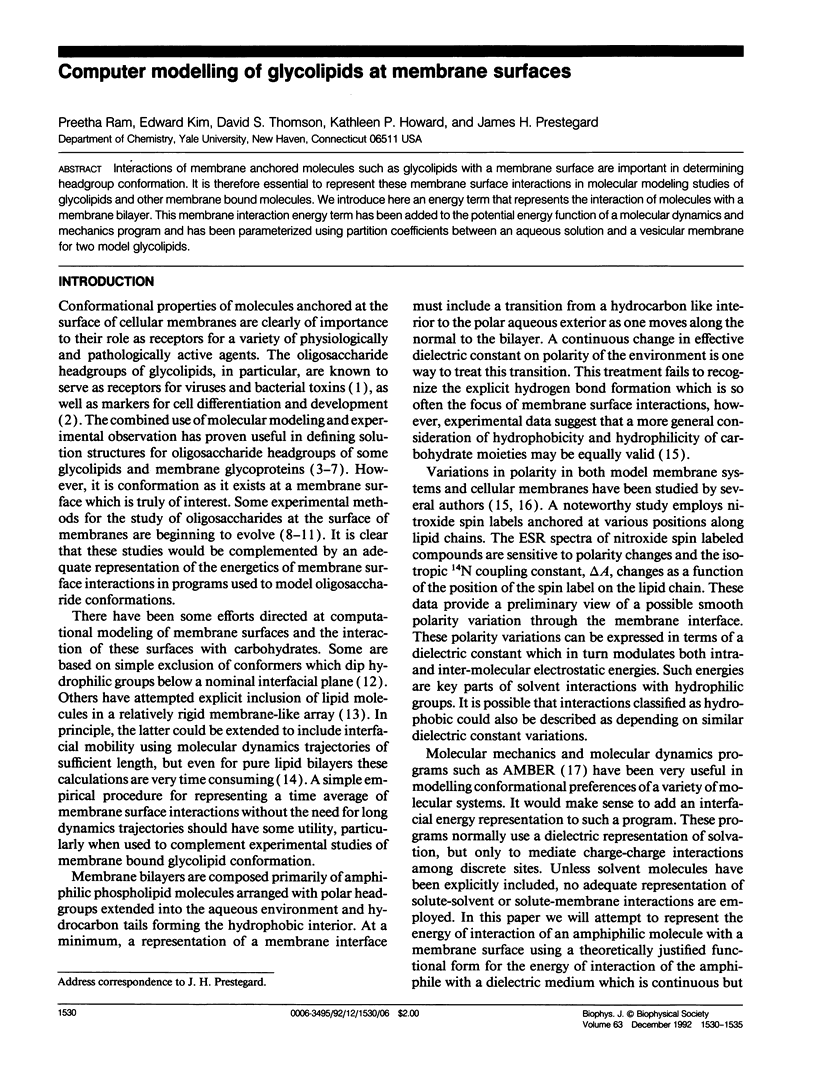
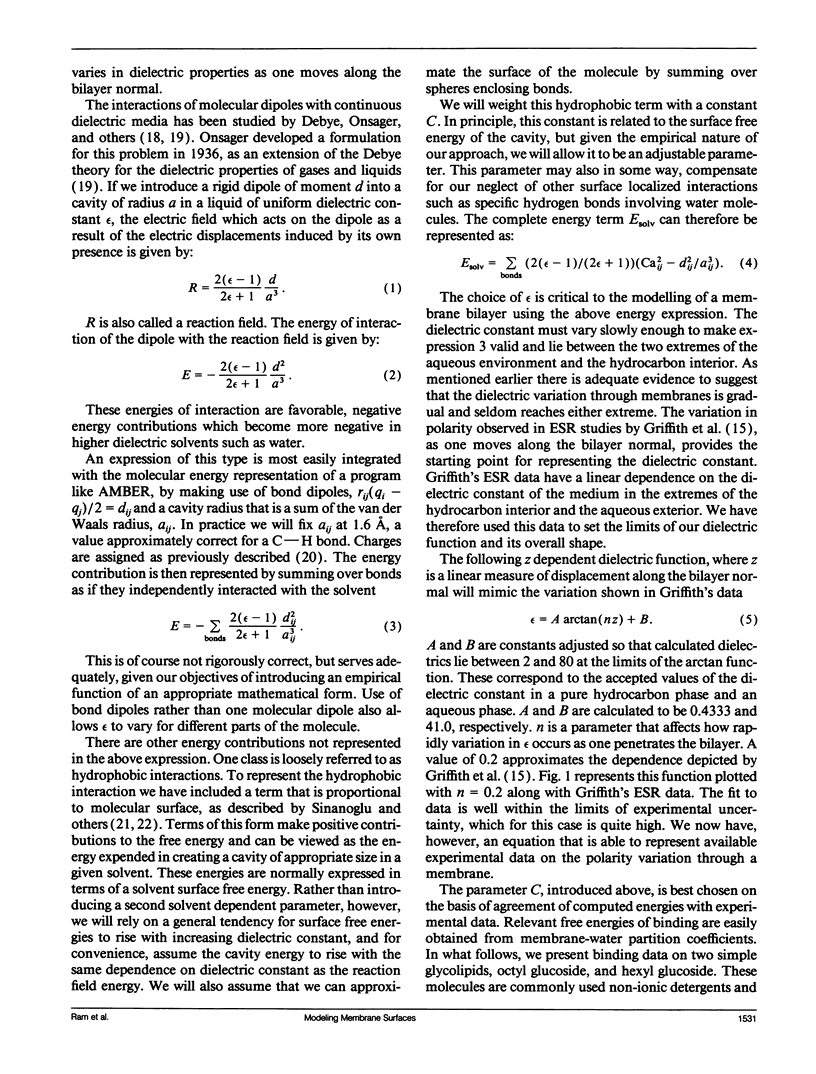
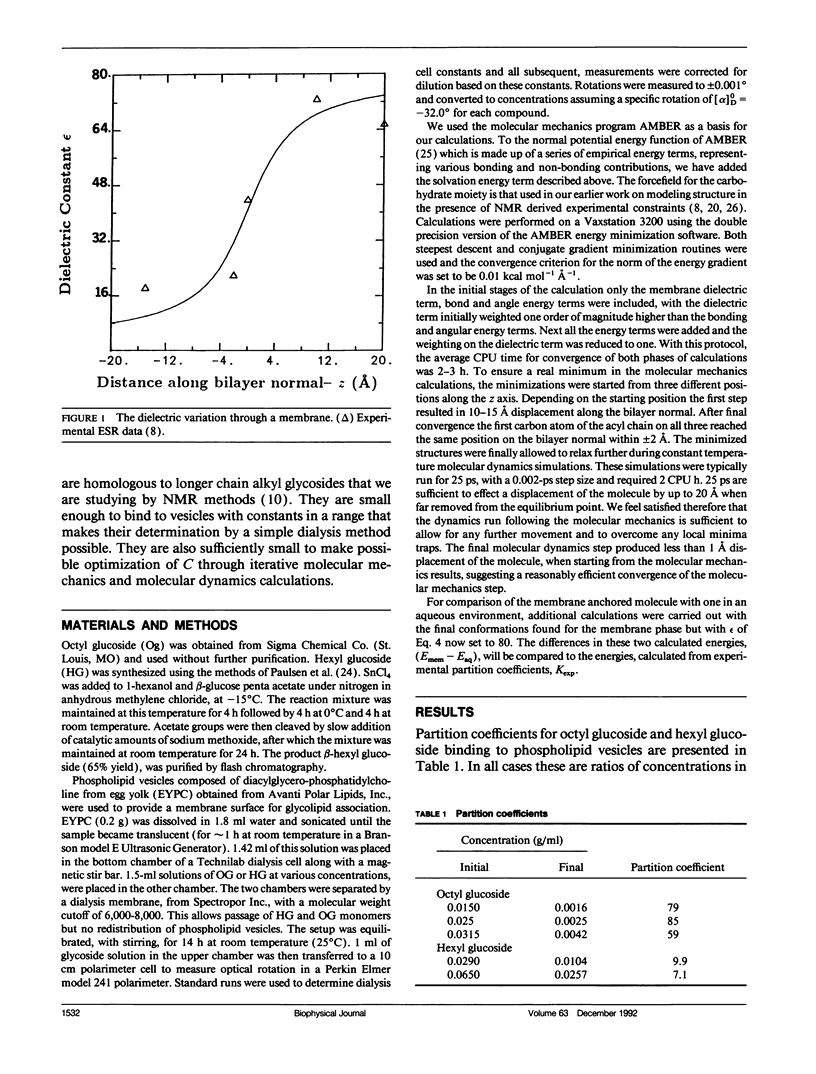
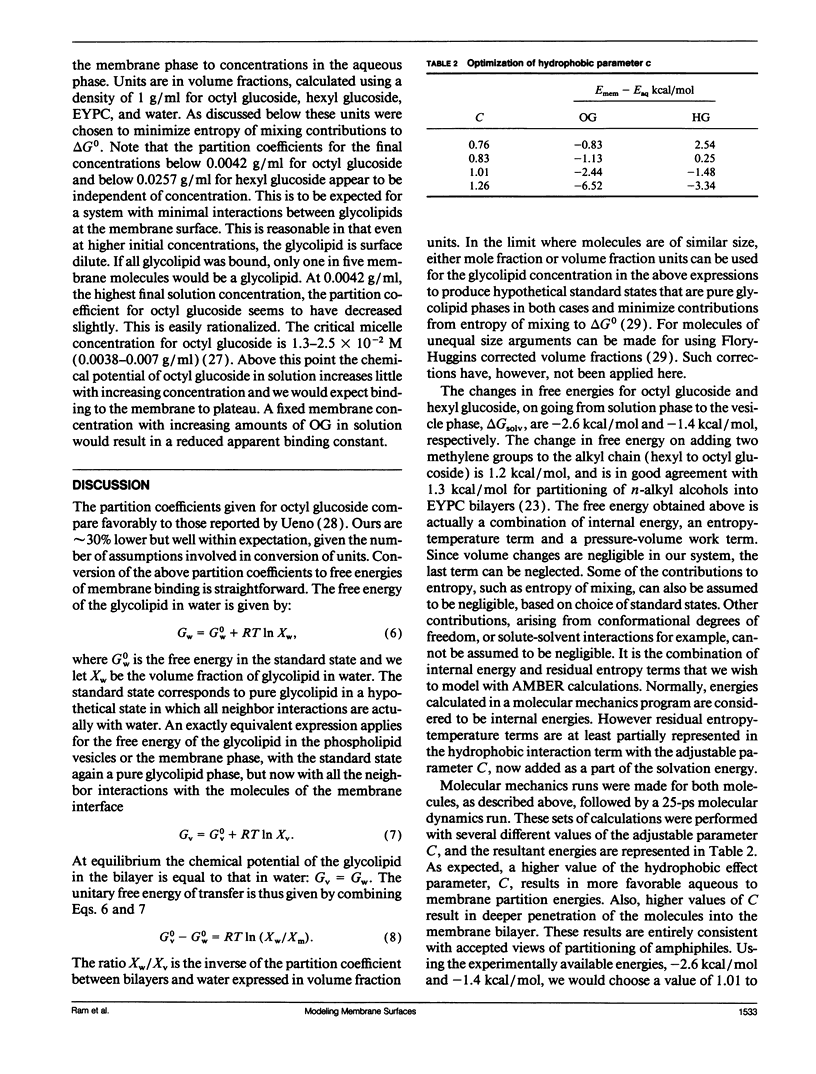
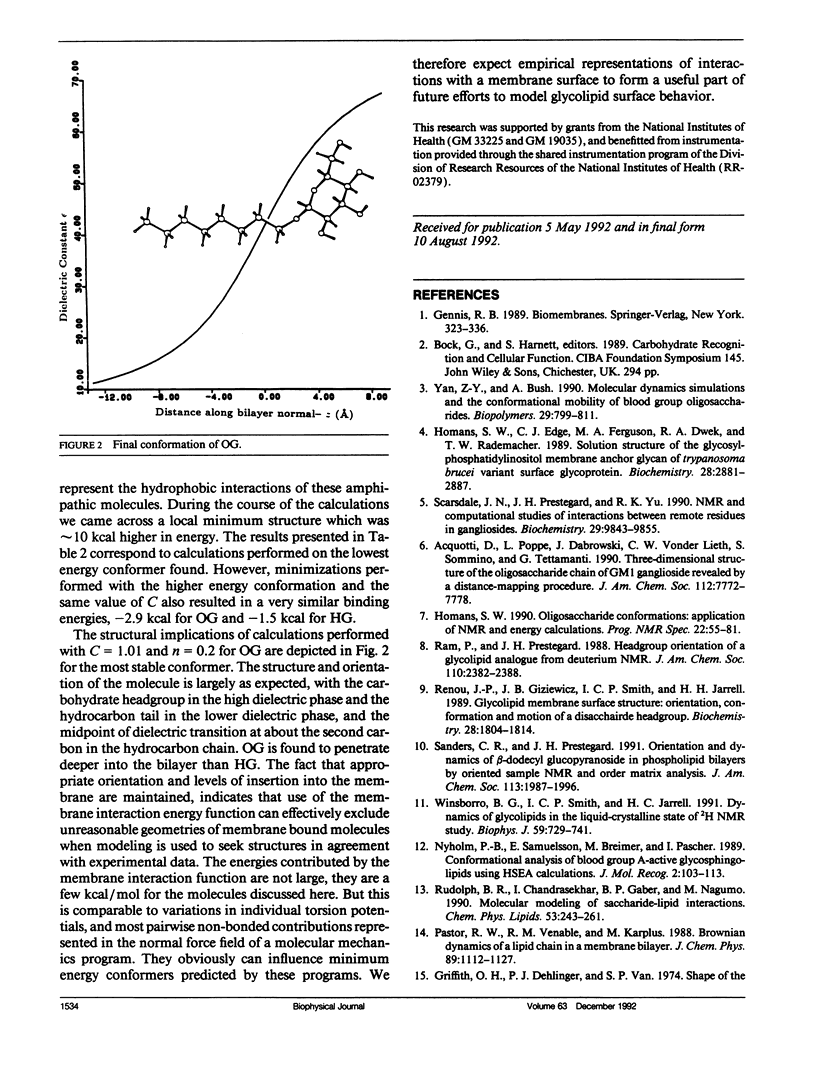
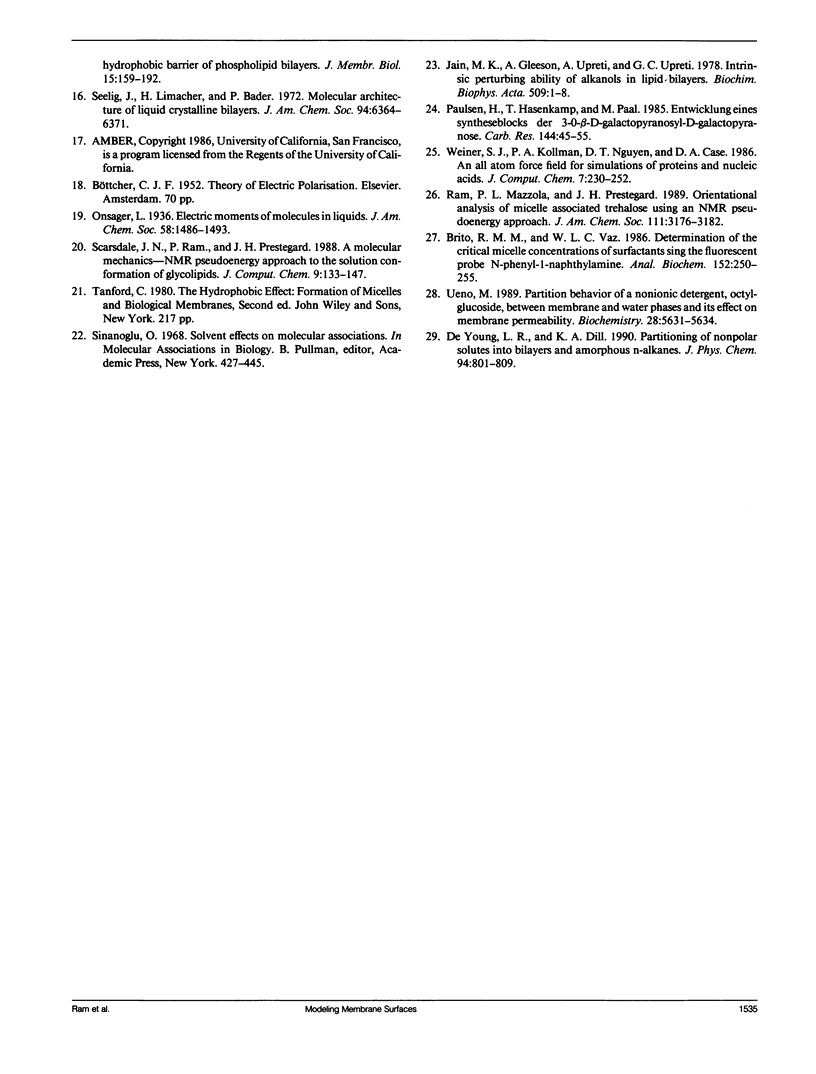
Selected References
These references are in PubMed. This may not be the complete list of references from this article.
- Brito R. M., Vaz W. L. Determination of the critical micelle concentration of surfactants using the fluorescent probe N-phenyl-1-naphthylamine. Anal Biochem. 1986 Feb 1;152(2):250–255. doi: 10.1016/0003-2697(86)90406-9. [DOI] [PubMed] [Google Scholar]
- Homans S. W., Edge C. J., Ferguson M. A., Dwek R. A., Rademacher T. W. Solution structure of the glycosylphosphatidylinositol membrane anchor glycan of Trypanosoma brucei variant surface glycoprotein. Biochemistry. 1989 Apr 4;28(7):2881–2887. doi: 10.1021/bi00433a020. [DOI] [PubMed] [Google Scholar]
- Jain M. K., Gleeson J., Upreti A., Upreti G. C. Intrinsic perturbing ability of alkanols in lipid bilayers. Biochim Biophys Acta. 1978 May 4;509(1):1–8. doi: 10.1016/0005-2736(78)90002-0. [DOI] [PubMed] [Google Scholar]
- Nyholm P. G., Samuelsson B. E., Breimer M., Pascher I. Conformational analysis of blood group A-active glycosphingolipids using HSEA-calculations. The possible significance of the core oligosaccharide chain for the presentation and recognition of the A-determinant. J Mol Recognit. 1989 Nov;2(3):103–113. doi: 10.1002/jmr.300020302. [DOI] [PubMed] [Google Scholar]
- Renou J. P., Giziewicz J. B., Smith I. C., Jarrell H. C. Glycolipid membrane surface structure: orientation, conformation, and motion of a disaccharide headgroup. Biochemistry. 1989 Feb 21;28(4):1804–1814. doi: 10.1021/bi00430a057. [DOI] [PubMed] [Google Scholar]
- Scarsdale J. N., Prestegard J. H., Yu R. K. NMR and computational studies of interactions between remote residues in gangliosides. Biochemistry. 1990 Oct 23;29(42):9843–9855. doi: 10.1021/bi00494a014. [DOI] [PubMed] [Google Scholar]
- Ueno M. Partition behavior of a nonionic detergent, octyl glucoside, between membrane and water phases, and its effect on membrane permeability. Biochemistry. 1989 Jun 27;28(13):5631–5634. doi: 10.1021/bi00439a044. [DOI] [PubMed] [Google Scholar]
- Winsborrow B. G., Smith I. C., Jarrell H. C. Dynamics of glycolipids in the liquid-crystalline state. 2H NMR study. Biophys J. 1991 Mar;59(3):729–741. doi: 10.1016/S0006-3495(91)82286-X. [DOI] [PMC free article] [PubMed] [Google Scholar]
- Yan Z. Y., Bush C. A. Molecular dynamics simulations and the conformational mobility of blood group oligosaccharides. Biopolymers. 1990 Mar-Apr;29(4-5):799–811. doi: 10.1002/bip.360290414. [DOI] [PubMed] [Google Scholar]


